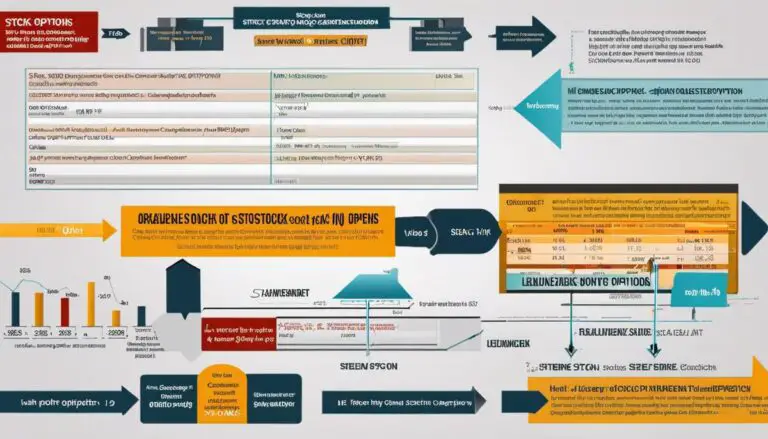At the heart of financial prosperity lies a meticulous and thoughtful approach to investment. Among the many strategies, value investing has long been celebrated as a pathway to long-term success. This strategy, rooted in the principles of simplicity, patience, and intrinsic value, is renowned for its potential to navigate through the fickle turns of the market. It’s about identifying the diamonds in the rough, those undervalued companies equipped for growth, and holding onto them steadfastly over time. Yet, to successfully practice value investing, one needs to understand its nuances, devise an analysis method, adapt to different industries, and learn from empirical findings and case studies. This discussion seeks to illuminate these essential dimensions of value investing.
Understanding Value Investing
Hailed as one of the most successful investment strategies ever devised, value investing, as the term suggests, revolves around the core principle of investing in undervalued stocks that trade for less than their intrinsic values. Championed by the likes of investment titans such as Warren Buffet, value investing embodies a pragmatic, long-term approach in contrast to the knee-jerk reactions often associated with the financial markets. But what is the real, intrinsic essence of value investing? How does it pivot from the traditional methods? Let’s dissect this intelligent, yet perplexing, strategy of asset acquisition.
At the fundamental level, value investing is akin to a savvy shopper rummaging through a discount rack, seeking high-quality items offered at a fantastic deal. It’s about paying less today with the projection that the bargain will reap higher returns in the future. This discipline finds its motives in the financials, rather than fleeting market sentiment, giving it a firming foundation in an investor’s portfolio. Just as any entrepreneur keenly analyses potential profit and risks before launching a product, value investors dive into comprehensive analysis of a company’s financial health: profit margins, return on equity, debt load, and other key financial ratios.
However, value investing isn’t merely about numbers. It’s strategy distilled with patience, discipline, and wisdom. Speculation—a game of buy low, sell high—isn’t the play here. Instead, investors seek companies that are fundamentally excellent, with resilient business models, dynamic leadership, and strong market positioning, companies that have somehow been swept under the market’s rug.
Make no mistake, a value investor isn’t some market romantic craving the thrill of turning Cinderella stocks into blue-chip belles overnight. Rather, they are strategic visionaries, looking beyond immediate market turmoil, willing to wait for the market to catch up to a stock’s true value. Think of it as waiting for a fine wine to mature, when it can finally be enjoyed in its full bouquet of flavors.
While the essence of value investing might seem heavy on patience and precision, it, interestingly, fuels flexibility as well—flexibility in the face of evolving markets, economic downturns, or surges. It is a strategy devised to weather market storms, the practical map insulating investors from the spine-chilling volatility of the market labyrinth. In this way, value investing is notably similar to the nature of successful entrepreneurship; both embrace diligent research, long-term strategies, flexibility, and a deep understanding of risk and return.
In a market environment punctuated by instantaneous digital trades and algorithmic selling, the essence of value investing anchors in clear waters of fundamental analysis, patience, and long-term focus. It outshines short-term trends and burns brighter in the consistent flame of resilience. With its fundamentals engrained in intrinsic value, value investing evolves as an evergreen approach. An approach that may not always be in vogue, but when peeled back to its core, illuminates unquestionable logic and brilliance. As Warren Buffet once said, “It’s far better to buy a wonderful company at a fair price than a fair company at a wonderful price.”
In conclusion, value investing is an analytical, patient, and resilient approach. It’s rooted not in chasing trends, but in identifying solid businesses trading beneath their deserved market value. This strategy invites us to go against the mass hysteria of the investing world, to perceive hidden value, and to dare to be patient when the world demands rapidity. It urges us to reconsider our definition of value, and quite frankly, encourages us to be a little wiser with our investments.

Factors Influencing Value Investing
Next, let’s dive deeper into the unique core factors to ponder when engaging in value investing, enhancing our understanding beyond basic principles, financial analysis, and the guidance of prominent figures such as Warren Buffet.
- Understanding the Competitive Market:
- Inherent Business Model:
- Responsible Management:
- Price vs. Value:
- Economic Moat:
- Margin of Safety:
An astute value investor views competition not as a perilous state, but an opportune situation for enhancing market engagement. Before making a value investment decision, evaluate the competitive landscape. Understand the market dominance of the firm, the threats from competitors, and any barriers to entry for new businesses. Ideally, you should seek companies that have a moat or a sustainable competitive advantage that protects their earnings.
There’s an undoubtedly certain allure to complex business models, yet simplicity often rules in the realm of value investing. The easier the business model is to understand, the simpler it becomes to ascertain the company’s future profits. When these profit engines are easy to discern, it becomes possible for a value investor to make more accurate predictions about the company’s prospects.
Closely observing a company’s management team is vital. It is the management’s competence and dedication that stirs a company’s direction. Look for companies that are open about their strategies and challenges. A competent management team will align their interests with those of their shareholders.
A crucial mistake is conflating the price of a company’s stocks with the actual value of the company. A cheap price does not equal value. Before investing, conduct a thorough analysis to find the stock’s intrinsic value. This means you must understand the underlying business, its competitive positioning, the industry landscape, and future growth prospects.
The concept of the ‘economic moat’ is crucial in value investing. Like a protective barrier around a castle, the economic moat is a unique advantage that protects a company from competitors. This could be a strong brand identity, patents, high switching costs, or even network effects.
Margin of safety is the principle of purchasing securities at prices below their intrinsic values. This provides a safeguard against unexpected market volatility or failure of the investment to perform as anticipated. Historically, those who have adhered to this rule of thumb have significantly mitigated their risk experience.
The road of value investing spares no room for sentimentality or haste. Instead, it requires a meticulously analytical and proactive mindset, reaching beyond base numbers to delve into the subtleties of the market’s infrastructure, and the companies within it. Remember, value investing isn’t just about finding undervalued companies; it’s about identifying excellent businesses and buying them when they’re on sale.

Conducting a Value Analysis
Performing a Value Analysis: The Essential Metrics to Note
In order to truly understand the knack of value investing, one cannot overlook the importance of a comprehensive value analysis. The vitality of spotting undervalued prospects and accurately predicting their potential for long-term profitability hinges upon this very process. Here’s how to ensure a detailed value analysis and the crucial metrics to note.
To conduct efficient value analysis, begin by understanding the company’s earnings. Assessing the earnings per share (EPS) is pivotal. It presents the portion of a company’s profit allocated to each share of common stock. This metric becomes a gateway to gauge the profitability trend of the company. Look out for an upwards trajectory over time in a company’s EPS, showing consistent growth and financial stability.
Next, zero in on the return on equity (ROE). This metric measures how effectively management uses a company’s assets to create profits. A steady or growing ROE typically indicates a firm that’s adept at amplifying its assets to generate earnings.
From the panoramic perspective of value investing, cast your attention toward free cash flow (FCF). FCF is the cash a company generates after accounting for cash outflows to support operations and maintain its capital assets. A positive FCF indicates a company’s ability to repay debt, pay dividends, or invest in business growth.
One invaluable pointer on value investing’s compass is the P/E ratio, which provides a snapshot of how stock price compares to its earnings. Seeking out lower P/E ratios often implies more value for your investment, but it’s essential to compare within industries, as average P/E can vary widely.
This perspective must be backed by the Price-to-Book ratio (P/B ratio), which compares a company’s market capitalization to its net asset value. A lower P/B ratio could indicate a potentially undervalued company – but again, industry comparisons are key.
Underpinning every value analysis is the assessment of a company’s debt. Assessing the Debt-to-Equity ratio (D/E ratio) unveils a company’s financial leverage. A low D/E ratio may be indicative of lower financial risk.
Finally, it should be underscored that an informed investor doesn’t merely look at numbers but also scrutinizes a company’s overall stability and reputation. An investigation into current news, market standing, and public perception can reveal invaluable insights, often making the difference between a good and a great investment.
Overall, in the realm of value investing, judiciously performed value analysis pivots on understanding the company’s earnings, assessing ROE, monitoring its FCF, evaluating P/E and P/B ratios, and scrutinizing its D/E ratio. By attending to these metrics and incorporating industry knowledge, keen observation, and insight, one can master the art of value investing. A careful blend of quantitative data and qualitative analysis, when applied with logical reasoning and patience, unlocks the door to profitable long-term investments. Therefore, recording these metrics should be mandatory on every savvy investor’s checklist.
Keep in mind, though, that understanding how to perform a value analysis is just a piece of the overall investing puzzle. Short-term trends may hold attention, but it’s the long-term vision that drives value investing. So, go forth and make those informed, long-term decisions that will lead you to ample returns down the line. Value investing is not just a strategy, but a mindset – make sure it’s an integral part of your investment perspective.

Value Investing in Different Industries
Applying Value Investing Across Industries – The Smart Move Forward
Understanding the raw power of value investing requires a bird’s-eye view, an acknowledgment of the divergent landscape that is investment across industries. Breaking through the traditional boundaries, a fresh look at value investing provides a novel insight into its broad application on varying scales and sectors.
Just as businesses differ across industries, so does the application of value investing principles. The technology sector, for instance, calls for application of value investing in a much different way than the retail or healthcare sectors. What holds true across these sectors is the underlying principle of identifying companies trading for less than their intrinsic value.
Investing in the tech industry doesn’t solely rely on traditional financial metrics. The rate of growth, scalability, market demands, and track record of innovation are parts of the recipe for success. Companies thriving here tend to have robust competitive advantages that protect their future viability and profitability — the wide economic moat Buffet so eloquently alludes to in his teachings.
Value investing in the real estate sector, on the other hand, is heavily influenced by prime locations, property quality, rental income, and real estate trends. Emphasis is placed on the company’s ability to generate consistent cash flows and prudent management to weather market challenges, underscoring the importance of free cash flow (FCF) as a critical underlying principle.
The healthcare sector presents a unique scenario for value investing. Fluctuating regulations, technological advancements, and patient demographics need to be considered. Innovation in care delivery and drug development are crucial, so a profound understanding of these aspects should not be overlooked. Investing in reputable companies with stable management, profitability, and patent-protected drugs works wonders in the healthcare arena.
In the retail sector, value investing can be influenced by factors like quality of merchandise, brand loyalty, customer service, and suppliers’ relationships. Companies with the agility to adapt to evolving consumer behavior stand out amongst the competition. Positioning and partnerships also play significant roles in building an economic moat for these retailers.
Understanding corporate financials – the EPS, P/E ratio, ROE, P/B ratio, D/E ratio – remains a solid stepping stone in value investing. Gauging this data across industries, however, calls for the integration of industry knowledge to reconcile the numbers with real-time business performance.
Ultimately, the philosophy of value investing plays out in the professional’s dedication to observation and long-term vision. Across the board, regardless of the industry, the essence of value investing revolves around smart choices and patience. As with all things in the entrepreneurial realm, it is the immersion in the finer details coupled with a comprehensive market overview that makes the difference.
Value investing across industries is more than a strategic leap. It is the art of uncovering hidden value offerings, the craft of unlocking potential amid challenges, and the dictum of staying put on long-term victories over quick fixes.

Photo by markuswinkler on Unsplash
Empirical Findings and Case Studies of Value Investing
Delving into the practical application of value investing, several case studies manifest as golden standards. These stories are quintessential testaments on the power and potential of this approach. Clinking the glasses of business acumen and investor insight, these cases can set any entrepreneur’s heart racing, and gear up business minds.
Benjamin Graham, the man who practically invented this method, saved Geico from financial ruin using value investment. In the fever-pitched times of World War II in 1948, Geico was a mere startup struggling with the burden of debt. Graham implemented value investing here, examining the business model with deep scrutiny, and then buying a large stake when it was highly undervalued. The result? By 1972, Graham’s $712,000 investment in Geico soared to an astounding $400 million – a staggering increase unrivaled even by today’s bold tech-bubbles.
John Neff, who managed the Vanguard Windsor Fund, also employed the principles of value investing. Neff focused on companies with low Price/Earnings ratios and solid dividend yield, in line with the dictates of value investing. From 1964 to 1995, the fund averaged a 13.7% annual return, besting the S&P 500’s 10.6% during the same period. Neff’s strategy paid off as the Windsor Fund became one of the best-known and most successful funds around.
Glancing at the technology sector, Apple Inc. emerges as an interesting case study. While not traditionally viewed as undervalued, the tech giant was once considered an unlikely candidate for a value investor due to heightened competition in the smartphone market. However, the ability to identify Apple’s solid business model, strong balance sheet, and fair stock value using value investing principles led many investors to profit when others were wary.
In the healthcare sector, one can hardly forget the case of AbbVie, a pharmaceutical company. Many value investors, cognizant of the growing demand for advanced healthcare solutions, took a stake in the company when the stock prices were reasonable. They played the long-term game, riding out waves of market volatility. Their patience bore fruit as the company gained a leadership position in the healthcare industry and the stock prices experienced significant growth.
From the real estate sector, the student housing company American Campus Communities offers a case in point. The company’s share prices were low due to negative sentiments about student housing investment opportunities. However, value investors who looked closely at the company financials, operation efficiency, and strong supply-demand dynamics scooped up shares at a bargain. The result? A revived stock value and substantial returns for the informed investors underlining the sage philosophy behind value investing.
The story of value investing holds its triumphs across every industry. Its application is not mere financial jargon. It’s a manifestation of smart, strategic entrepreneurship, tackling odds with wisdom and foresight, which every investor or entrepreneur should challenge themselves to become. A dive into these case studies can awaken the business savvy within each one of us – to know the hidden use of this powerful tool and dare to be a value investor in the true sense. Isn’t it time to rethink how one perceives investing? Experiment, play your best, and let the game of finances bring about transformational growth, just as it unfolded in these successful stories.

Throughout this analysis of value investing, we have endeavored to shed light on its multifaceted nature. Our exploration has ranged from philosophical underpinnings, key influencing factors, precise steps for value analysis, industry-specific applications to case studies illuminating the strategy’s practical workings. True to an investment strategy founded on the tenets of patience, perseverance, and intrinsic value, we hope that these insights help aspiring value investors navigate market unpredictability and unearth the true worth of potential investments. As we’ve seen, investing isn’t merely about capturing short-term gains – it’s about fostering a mindset of growth, resilience, and calculated risk-taking. Going forward, may these value investing principles serve as a guide to your long-term financial success.



